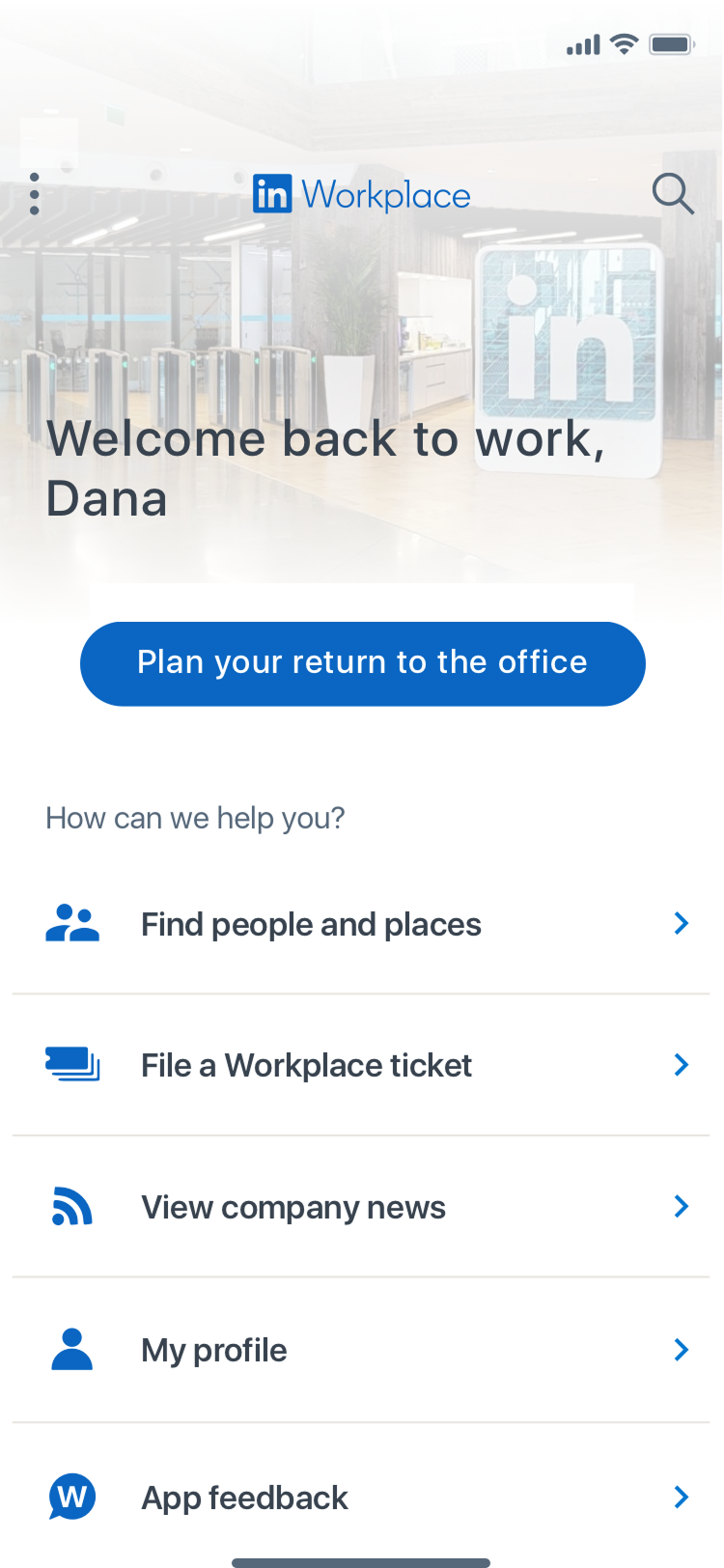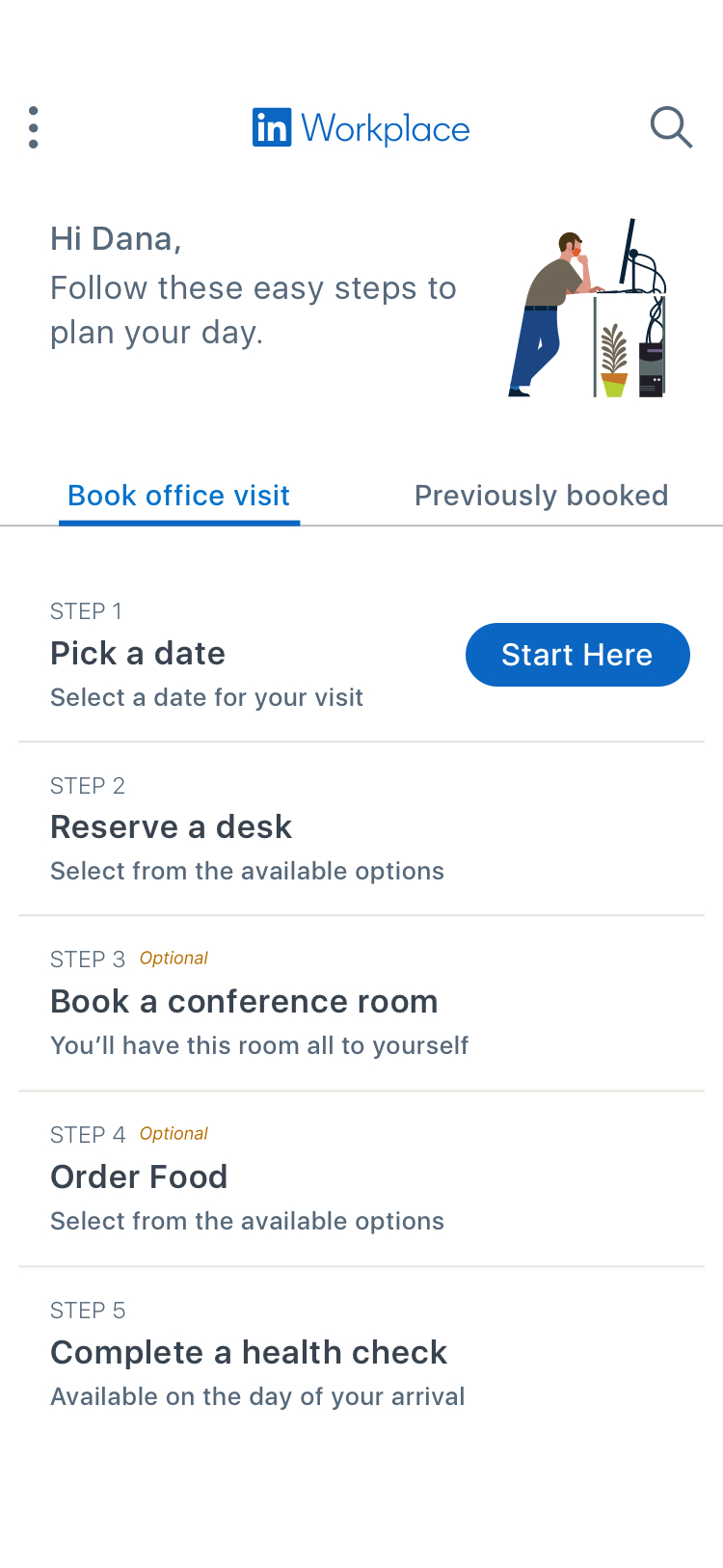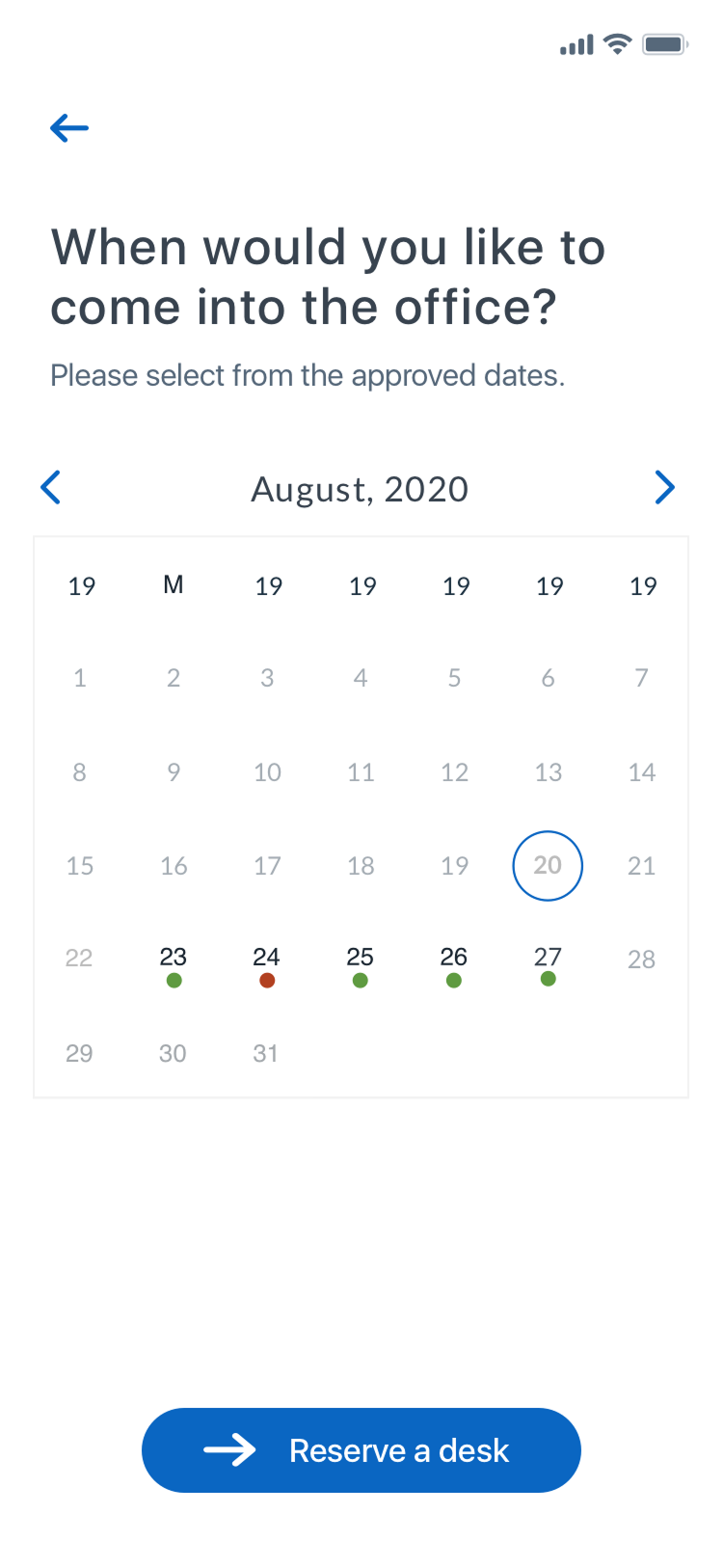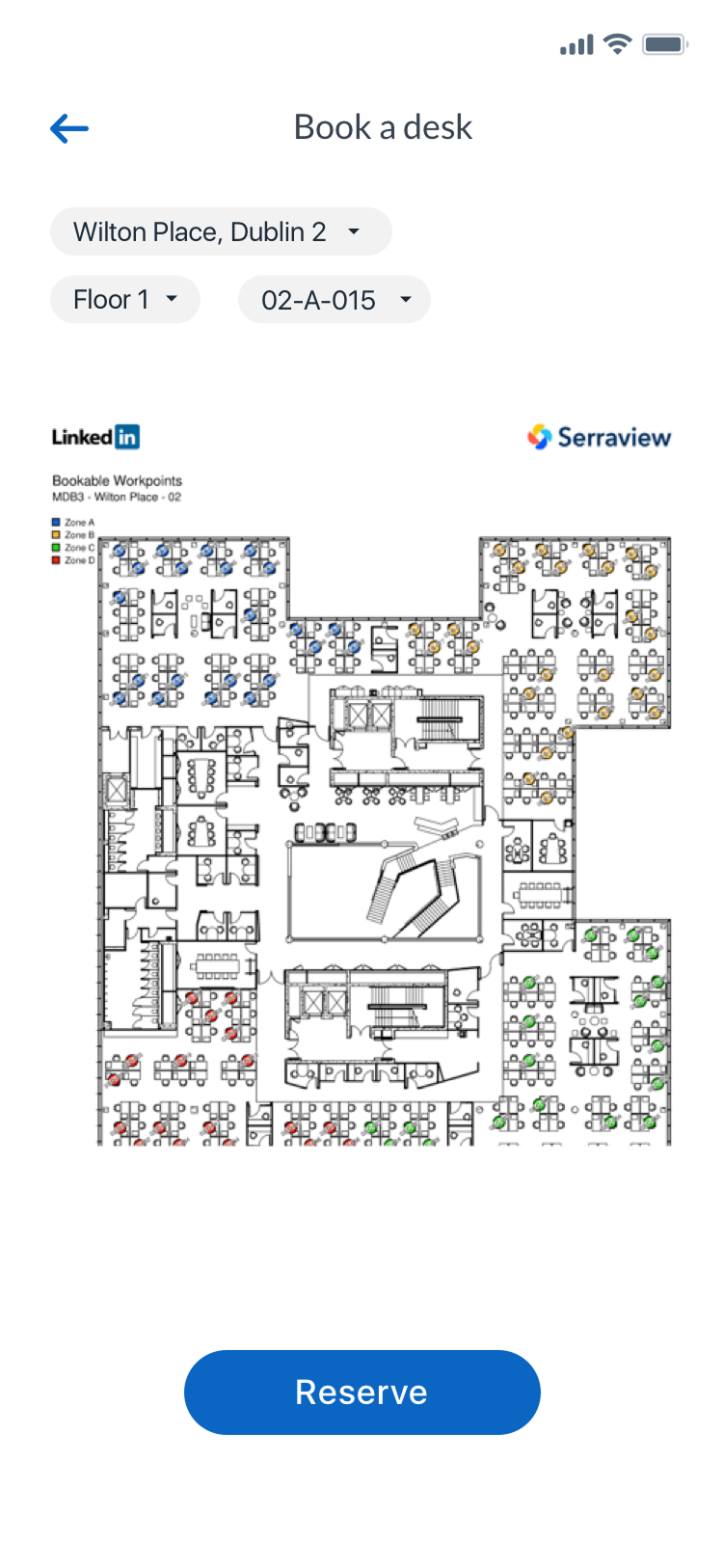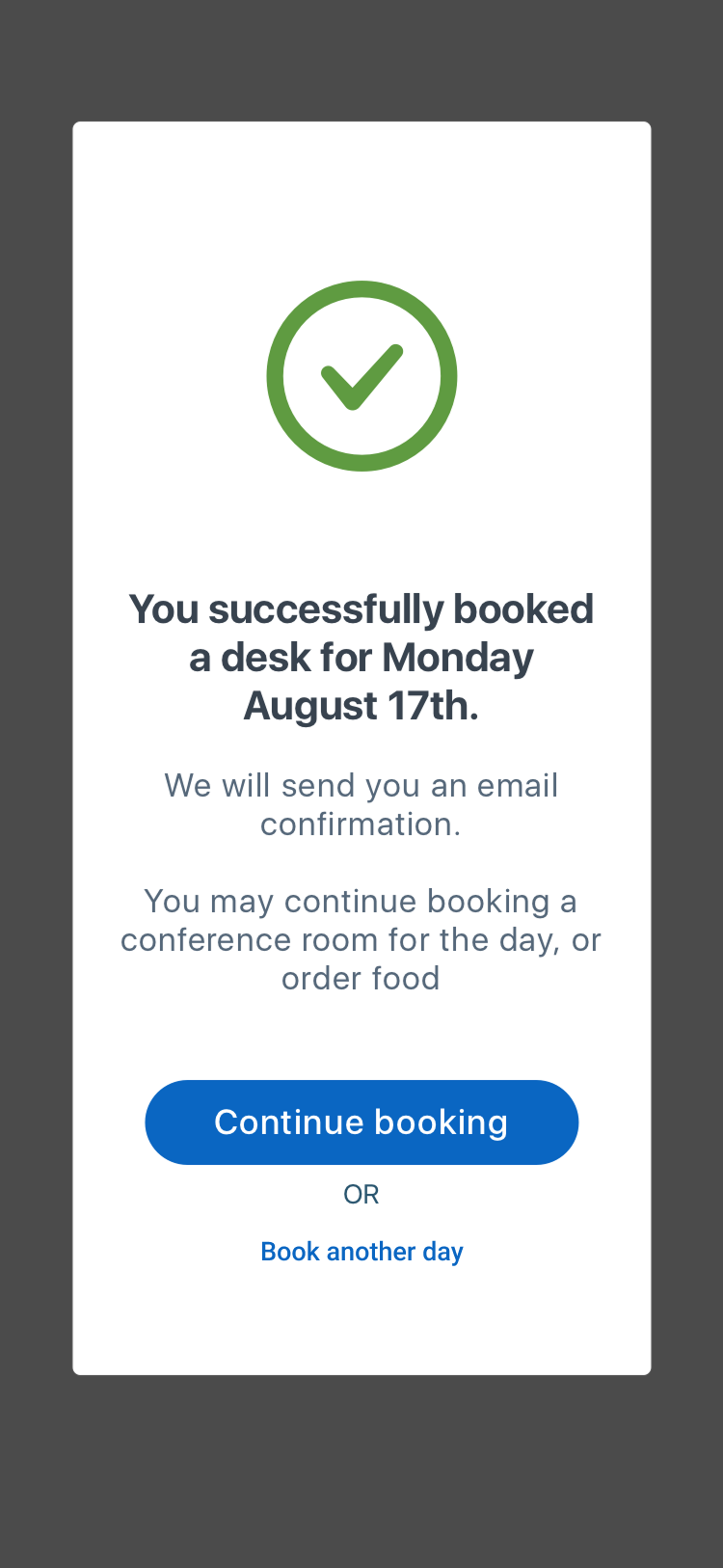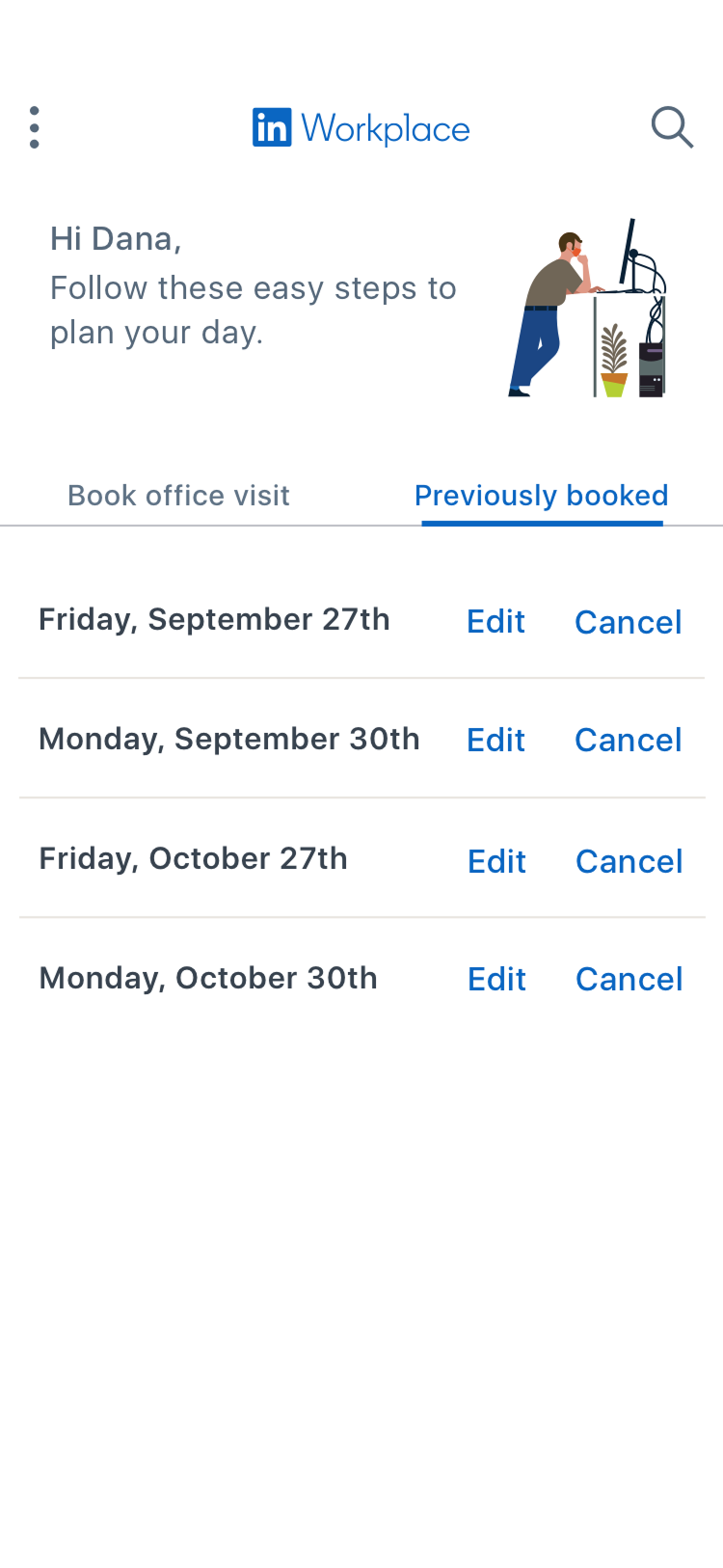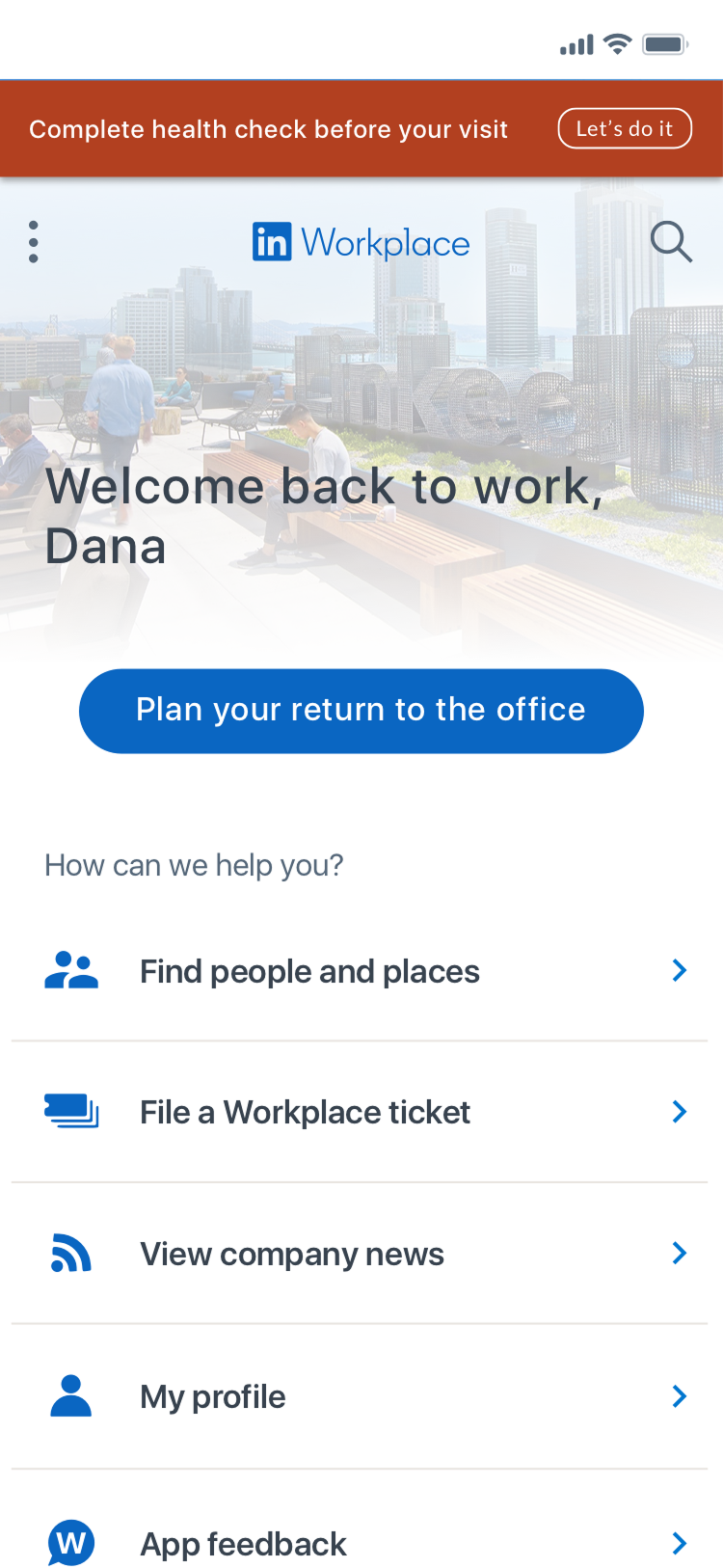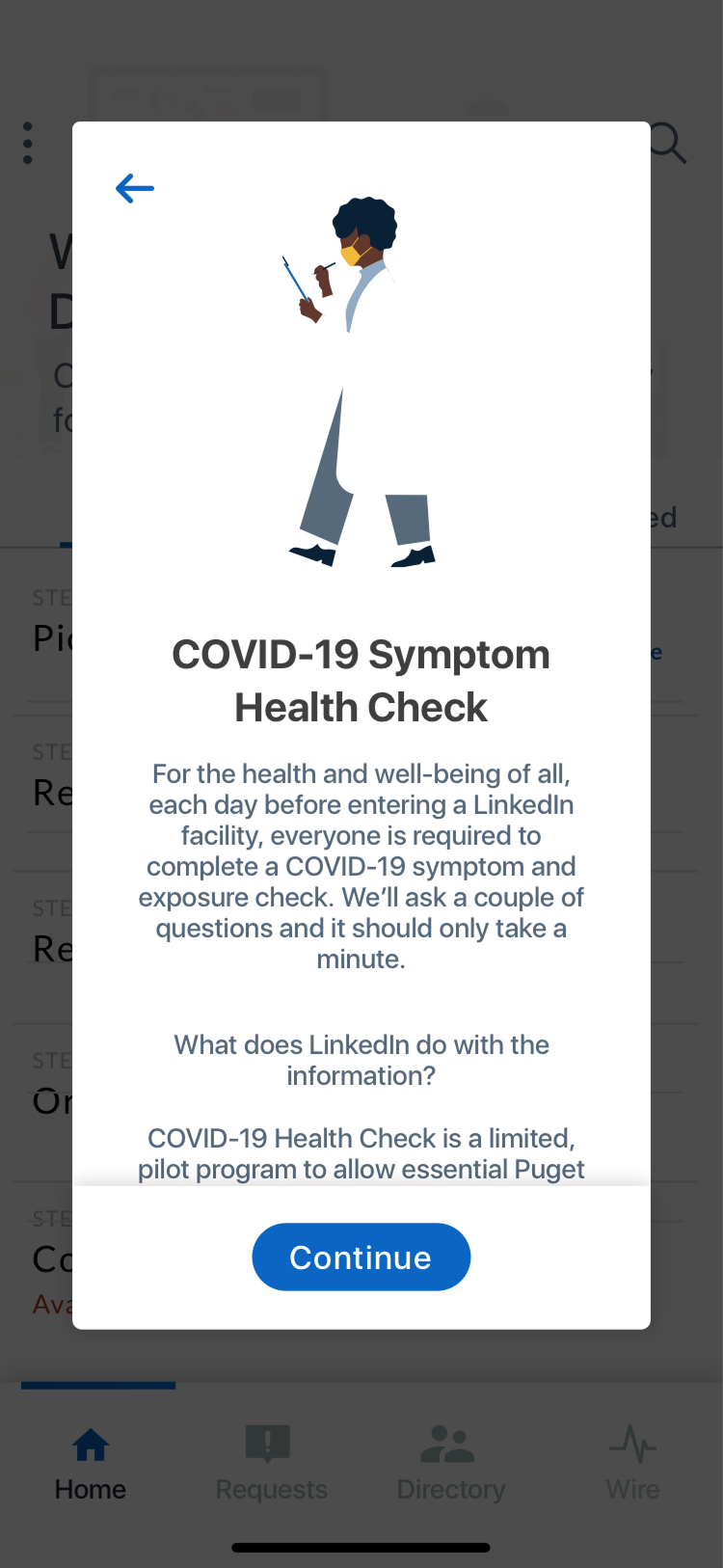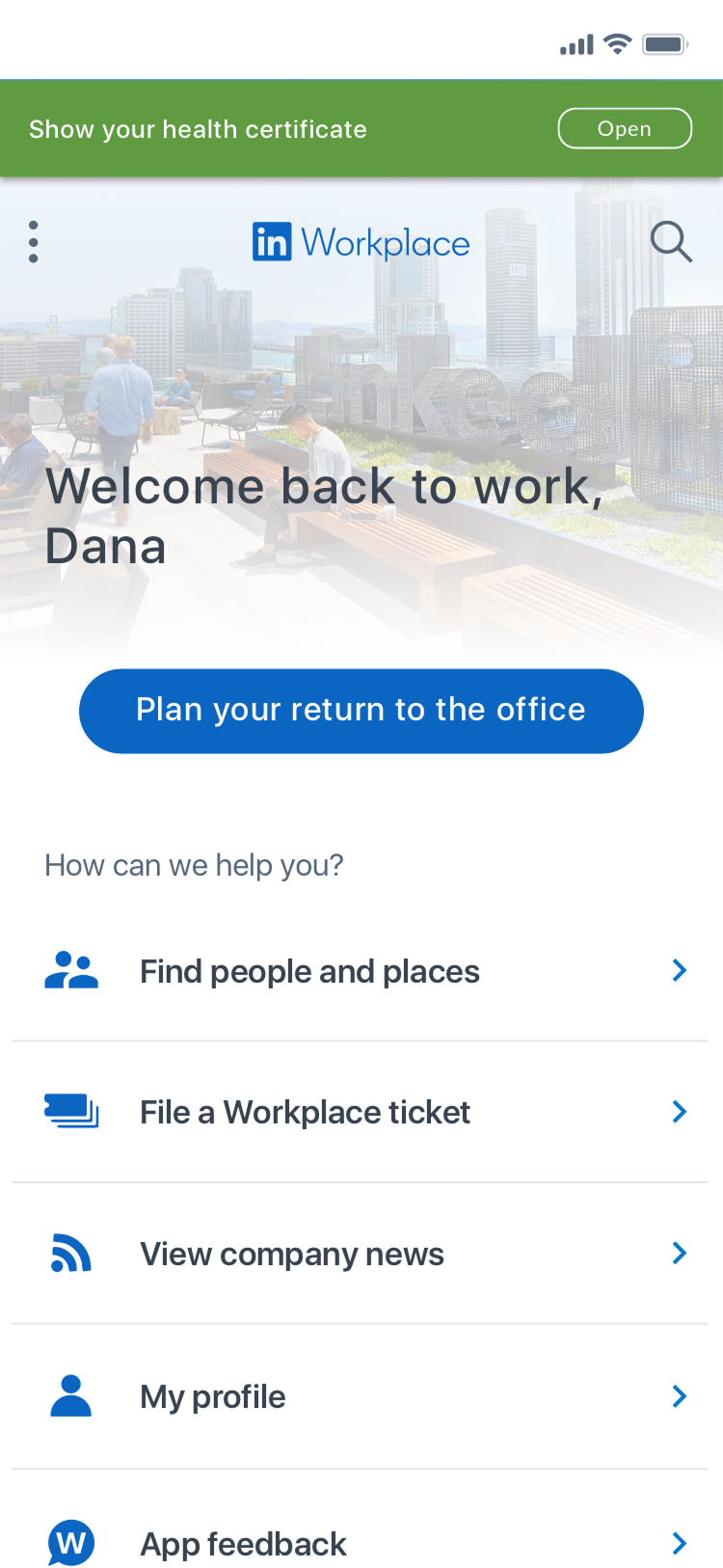Navigating Return-to-Office (Mobile App)
Problem
Pandemic created urgent need for safe return-to-office processes that didn’t exist before, requiring critical user compliance in rapidly changing environment.
Goal
Design mobile experience enabling employees to navigate new health and safety requirements while maintaining intuitive, adaptable user experience.
Team
Lead UX designer collaborating with product manager, UX manager, and engineering team during development.
Background
LinkedIn needed to rapidly digitize workplace safety processes that had never existed before—health attestations, desk reservations, food ordering, and compliance with evolving state guidelines. Requirements and policies were shifting almost daily, demanding a solution that could adapt quickly while maintaining high user compliance rates for time-sensitive actions.
My Process: Designing for Crisis and Uncertainty
- Workflow Design Under Pressure
- The Challenge: Create a comprehensive mobile solution that could handle complex, interconnected requirements while remaining simple for stressed employees navigating unprecedented workplace changes.
- My Approach: I structured a guided, step-by-step experience that allowed employees to complete tasks like health attestations, desk reservations, and meal planning without confusion. I prioritized mandatory actions first (such as health check-ins) while making optional features accessible but unobtrusive.
- Communication Integration Strategy
- The Insight: Employees were overwhelmed with emails and separate documentation about changing policies. The mobile interface needed to be self-contained and contextually informative.
- My Solution: I embedded instructions and rules directly into the interface, ensuring users received the right amount of information at the moment they needed it, eliminating the need to reference external documentation or emails.
- Behavioral Design for Compliance
- The Challenge: Balance user comfort with critical business needs—health attestations were required 24 hours before arrival, creating a narrow window for compliance.
- My Design Strategy: I implemented smart reminders that nudged users toward compliance (such as “Complete health attestation by 9 AM”) and used microcopy and color cues to gently drive attention and urgency without creating anxiety or frustration.
- Rapid Iteration Framework
- Constraint-Driven Design: With requirements changing daily, I established a framework for rapid iteration and feedback collection.
- My Approach: I created a built-in feedback mechanism to capture issues during rollout and collaborated closely with engineering and workplace operations teams. We sometimes updated flows weekly or even daily to keep pace with evolving guidelines and policies.
Key Solutions: Navigating Unprecedented Change
- Step-by-Step Experience Design: I broke down the complex return-to-office process into manageable, sequential steps that gave users a sense of control amid uncertainty. The guided flow ensured employees could complete all required tasks without missing critical steps or feeling overwhelmed.
- Contextual Information Architecture: Rather than relying on external communication, I designed the interface to provide all necessary information within the workflow context. Users could understand requirements, complete actions, and receive confirmations within a single, coherent experience.
- Proactive Notification System: I implemented a smart notification strategy that reminded users of time-sensitive requirements while respecting their attention and stress levels during an already challenging period.
Key Learnings: Design in Crisis
- Empathy-Driven Design: This project reinforced that during times of uncertainty, clarity and empathy become the most critical design principles. Breaking complex processes into clear, manageable steps helped users maintain a sense of control during a stressful transition period.
- Agile Collaboration: Working in an environment where requirements changed daily taught me the importance of building flexible design systems and maintaining close collaboration with engineering teams. The ability to iterate quickly without compromising user experience became essential.
- Balancing Compliance and Comfort: I learned to design “gentle but effective nudges” that met critical operational demands while avoiding user frustration. This required careful attention to microcopy, timing, and visual hierarchy to maintain trust during a sensitive period.

